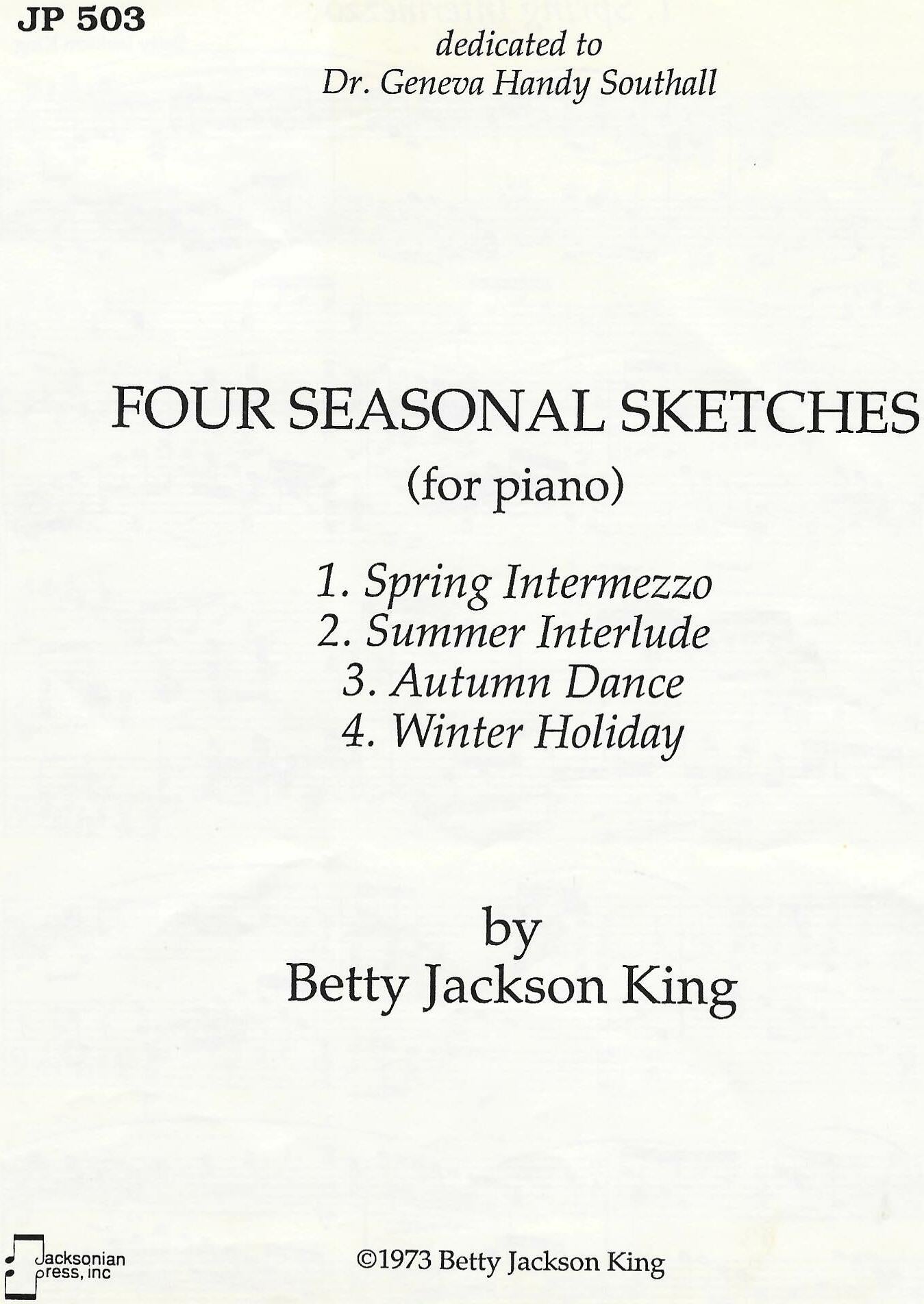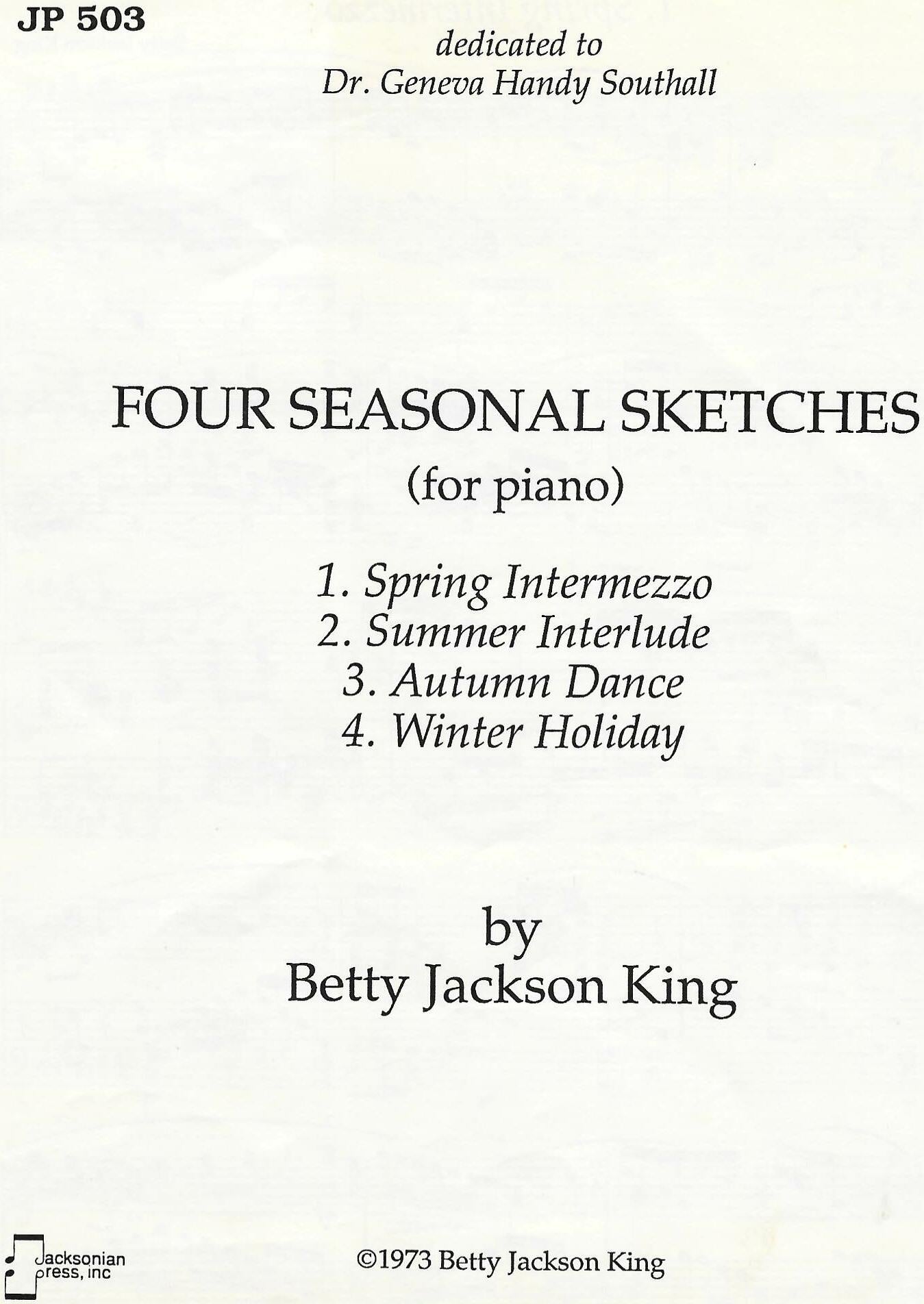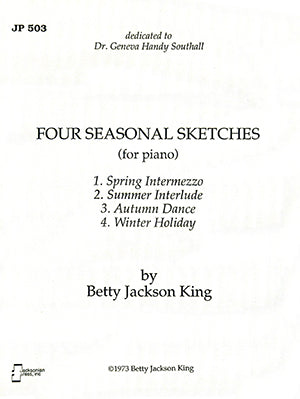

Video
Video
Historical Narrative
Composed in the mid-1950s, Four Seasonal Sketches stands as one of Betty Jackson King’s most evocative piano works, illustrating her deep sensitivity to color, mood, and motion. Dedicated to Dr. Geneva Handy Southall, an eminent pianist, scholar, and fellow African American woman of distinction, the work represents both a personal and artistic tribute. Southall was a pioneering musicologist and professor at the University of Minnesota, widely recognized for her research on composer and pianist Scott Joplin. Her professional advocacy for the recognition of African American composers and performers paralleled King’s own commitment to musical excellence and representation.
King’s Four Seasonal Sketches—a suite in four movements titled “Spring Intermezzo,” “Summer Interlude,” “Autumn Dance,” and “Winter Holiday”—embodies the cyclical renewal of nature as a metaphor for human experience. Each movement, while self-contained, flows organically into the next, forming a cohesive cycle of rebirth, reflection, energy, and rest. The suite captures the beauty of natural transformation through melodic contour, rhythmic vitality, and harmonic imagery that suggest changing light, atmosphere, and temperature.
King’s ability to blend classical form with romantic colorism and African American rhythmic sensibilities places Four Seasonal Sketches within the lineage of programmatic piano suites by composers such as Florence Price and Samuel Coleridge-Taylor. Yet, her unique harmonic voice—marked by extended tertian chords, lyrical counterpoint, and shifting tonal centers—imbues the cycle with her unmistakable compositional signature.
Musical Description
I. Spring Intermezzo
Key: A major (3 sharps)
Marked by luminous arpeggiation and gentle harmonic motion, “Spring Intermezzo” opens the suite with a sense of awakening and renewal. The flowing triplet figures and lyrical upper melodies evoke the imagery of unfolding blossoms and fresh breezes. King employs poco ritardando and Tempo I markings to shape a natural ebb and flow, creating an impressionistic soundscape that recalls both Debussy’s color palette and the melodic expressiveness of American art music. The harmonic progressions, though rooted in tonality, include lush extensions that lend a modern sensibility. The conclusion, marked pp with a sustained final chord, suggests tranquility and the quiet persistence of new life.
II. Summer Interlude
Key: G major (1 sharp)
With its marking Cantabile, this movement captures the warmth and lyricism of midsummer. The steady left-hand arpeggiation provides a shimmering foundation over which the right-hand melody unfolds in long, expressive phrases. Dynamic contrasts such as poco crescendo e accel. heighten the sense of growth and sunlight, while occasional syncopations add rhythmic vitality. The movement achieves both serenity and strength through its balanced structure—an elegant interplay between repose and movement. Its tonal warmth and lyrical phrasing evoke an atmosphere of leisure and reflection characteristic of the summer season.
III. Autumn Dance
Key: F major (1 flat)
“Autumn Dance” is characterized by its Ritualistic marking and grounded rhythmic motif. Here, King evokes the earthy, communal energy of fall festivals or harvest gatherings. The percussive bass patterns contrast with the buoyant treble lines, suggesting both rhythm and ceremony. The texture alternates between staccato articulation and chordal emphasis, giving the music a sense of propulsion and rustic vitality. Harmonically, the work moves between modal and diatonic inflections, producing a tone of reverence and rhythmic drive. The repeated rhythmic figures create a sense of ritual and closure, preparing the listener for the season’s introspective close.
IV. Winter Holiday
Key: C major (no sharps or flats)
Marked Crisp, the final movement sparkles with rhythmic clarity and contrapuntal brilliance. The alternation of accented chords and rapid arpeggios gives the impression of bright winter light reflecting off snow. King’s dynamic markings—from p to f—convey the contrast between stillness and festivity, suggesting both the hush of falling snow and the lively joy of seasonal celebration. The rhythmic interplay between hands showcases the pianist’s technical control, while the clear tonal structure brings the suite to an invigorating and affirmative close.


